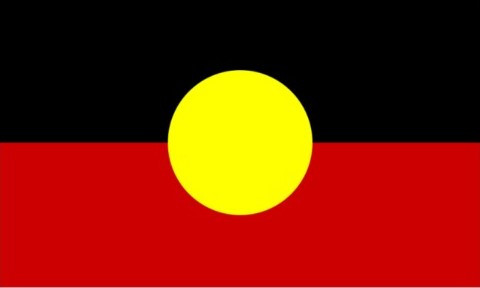Respiratory droplets spread the COVID-19 virus through sneezing and coughing. This leads to infection in people who are in close contact with them. The droplets also contaminate surfaces where other people pick up the virus. The virus can live up to several days on surfaces like stainless steel and plastic. Sunlight, humidity, and temperature affect the survival rate of the virus. The virus can be destroyed through cleaning with a detergent and disinfectant.
Cleaning vs. Sanitizing vs. Disinfecting
Cleaning removes contaminants from a surface but doesn’t remove disease-causing organisms. Sanitizing kills surface bacteria but does not include fungi or viruses. Disinfecting can kill bacteria and fungi and can inactivate viruses.
Surface Disinfection is Now Focused on Eliminating the COVID-19 Virus
The surface must be cleaned to remove any dirt or organic matter. Any physical matter can reduce a disinfectant’s efficiency in killing germs. You need to use a disinfectant with virucidal claims. This is according to the Australian Government’s COVID-19 environmental cleaning and disinfection principles for health and residential care facilities. This will kill viruses and bacteria to reduce the risk of infection spread.
In your home, wipe down all surfaces with warm, soapy water first. Use a paper towel so it can be cast off afterward. Once you have cleaned the surface, disinfect. Wipe the solution all over the surface to ensure complete coverage. Use a fresh paper towel for this process to separate from the cleaning procedure. Do not wipe cleaning solutions too quickly since it will not allow the product to do its job successfully. Read directions and warning labels to familiarize yourself with the instructions for use.
Washing your hands thoroughly and regularly with soap and water for at least 20 seconds is one of the best defence against COVID-19. Infection occurs once you touch a contaminated surface and then when you touch your mouth, nose, or eyes. This is a very important process, especially if you just came from outside the house.
Removing shoes before entering the house is also a good practice to prevent the spread of germs. Designate an area for keys, wallets, mobile phones, and sunglasses. These are frequently used items that leave the house. Clean your mobile phone regularly with anti-bacterial wipes. Avoid letting others touch your phone. If necessary, make sure they wash their hands before and after touching it.
Ensure the house is well-ventilated by opening your windows.
Natural cleaning products like vinegar are not as effective as commercial disinfectants. Do not mix cleaning products as this might create dangerous solutions. Consider the following when choosing a disinfectant:
- The product should be approved for the pathogen concerned. For COVID-19, it should be able to deactivate SARS-CoV-2.
- Use a one-step disinfectant with a short contact time (five minutes or less).
- The product range should offer wipe, concentrate, and ready-to-use solutions.
- It should be gentle on the skin and the surfaces but tough on pathogens.
Medical Cleaners are now Required to Have Special Training In COVID-19 Regulations
Medical cleaning has always been vital in minimising Health Associated Infections (HAI) in healthcare facilities. It has become the frontline defence since the COVID-19 pandemic started. It not only lessens infection rates in patients and visitors but also protects the frontline medical workers exposed to the virus.
The more often a surface is touched, the higher the likelihood it will transmit germs. Studies show that germs can spread from an infected person to an entire office in two to four hours via contaminated surfaces. Cleaners should then focus on high-touch surfaces like reception counters, door handles, lift buttons, stair handrails, bed frames, telephones, basins, taps, and waiting room chairs. Cleaning frequency depends on the area, so a cleaning plan must be done for the healthcare facility.
In other public places like schools, offices, retail outlets, hotels, and public transport, there are many common surfaces like supermarket trolleys and baskets, cashpoints, petrol pumps, rubbish bins, kitchen, and dining areas, kettles, toilet flush handles or buttons, recycling areas, and vehicles.
Terminal cleaning of rooms that COVID-19 patients have vacated needs to be very thorough. Privacy or window curtains must be disposed of or washed. Cleaners should wear full-length disposable gowns, face masks, gloves, and eye protection.
Since the COVID-19 virus lives on surfaces for hours to days, equipment used to clean cloths and mops is now a possible infection source. Items reused need to be thoroughly disinfected. PPE (Protective Personal Equipment), masks, gloves, and gowns should be regularly changed before moving to other facility areas.
Areas soiled with bodily fluids like blood, urine, vomit, or feces need specialist cleaning. These can seep through porous materials that are difficult to detect. When the toilet lid is not closed while flushing, toilet water can land on high-touch surfaces. This can provide transmission of the virus via unwashed hands.
For sterilizing large areas, fogging is the ideal solution. ULV (Ultra-Low Volume) disinfection fogging uses a fogging machine to produce a cloud of very small droplets of disinfectant. The droplets reach inaccessible areas using conventional cleaning methods. It also reaches a broader surface area in a shorter period.
Medical facility cleaning should have operating procedures, checklists, sign-off sheets, and cleaning plans to ensure that cleaning is carried out accurately and regularly. The cleaners should work with the facility’s management to guarantee that the disinfection process meets safety standards.
Professional covid cleaning service providers have the methods, tools, and products to disinfect areas. They clean and disinfect using approved safety procedures, tools, and products. They are compliant with government safety regulations. They will provide a cleaning report to prove that your home or facility is safe.
Storm International
Storm International’s expertise in medical cleaning and surface disinfection can provide peace of mind that you, your family, and your facility are protected from the spread of infection. You may contact us here.



